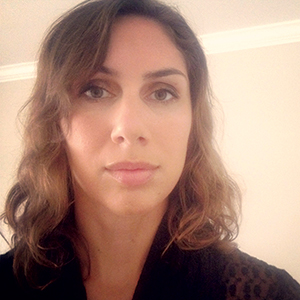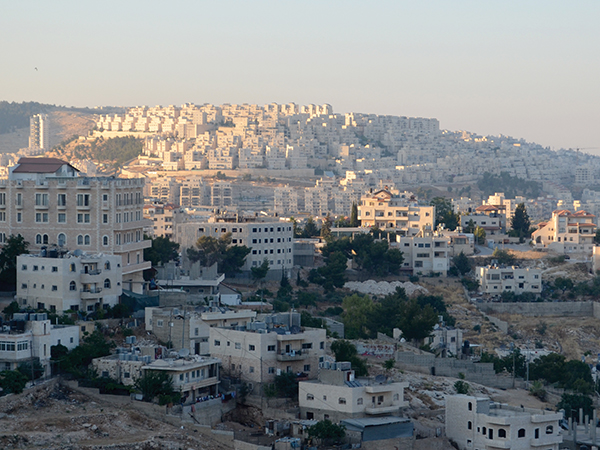
The documentary-propaganda film Homecoming was released just one year after the events of the Nakba, during which anywhere from 400 to 600 Palestinian villages were destroyed by Israeli forces. “On the home front, it’s a war of construction. A quiet war,” intones the 1949 film, made by the United Israel Appeal to drum up foreign financial contributions to the fledgling state. In one scene, a young couple clutching bundles of luggage saunters down an unpaved street. A row of identical white homes gleams beyond them, all freshly assembled. Inside one house, a middle-aged man beams with pleasure as he draws open a line of window slats. “A victory has been realized,” continues the narrator, “a glorious conquest, with the luxury of Venetian blinds… the wonder of a full linen closet.” These three residents, newcomers to the Jewish state, were among hundreds of thousands of new citizens drafted to the front line of Israel’s construction boom.
After the violent demolitions of 1947–1948, a quieter war took place across the country, with a rush of new developments literally cementing the transformation of Palestine into the new Jewish state. Israel’s so-called “war of construction” came with better amenities – “Venetian blinds,” “a full linen closet” – than most other war zones, but its targets were nonetheless the same. The new state looked to overpower one people in place of another, only this time through the medium of space. The sociologist Sari Hanafi coined the term “spaciocide” to describe the “entire Israeli project since 1948,” which has produced far fewer casualties than other major conflicts while still causing devastating losses. As Hanafi has explained, “In every conflict, belligerents define their enemy and shape their mode of action accordingly. In the Palestinian-Israeli conflict, the Israeli target is the place.”i
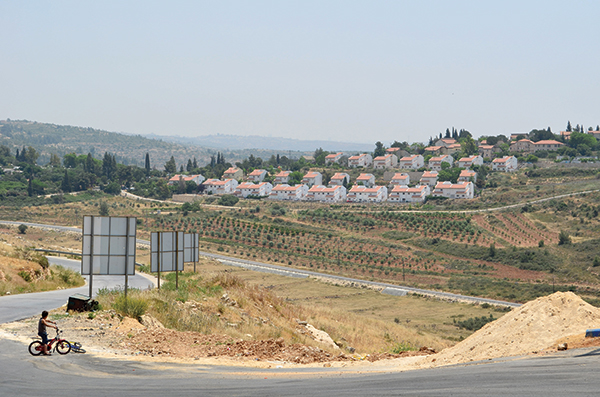
In the events of 1947–1948, property destruction was a key feature. Bombs rocked urban centers, decimating familiar spaces; whole communities were reduced to rubble. Schools, cafés, farms, and cultural sites were cleared or converted, tacked on to the expanding Jewish state. In the countryside, Israeli paramilitary forces advanced a set of military campaigns. Plan Dalet, now perhaps the most notorious, set out specific instructions for the destruction of villages. They included “setting fire to, blowing up, and planting mines.”ii Attacks on Palestinian space spurred an exodus of residents to neighboring countries, somber processions toward safer grounds. Terrified residents were removed by troops, as in Zarnuga, or the Christian village of Al-Rama, or else, like the villagers of Khirbat ‘Azzun, they were goaded into leaving by surrounding attacks. After statehood, expulsions accelerated. Groups set out for Egypt, Syria, and beyond the West Bank border, embarked on slow climbs to Lebanon, or were bused to neighboring Jordan. Refugees were never to return. Meanwhile, Israeli territory ballooned from only 1,800 square kilometers before the war to a whopping 20,000.
♦ Over 400 Jewish towns shot up in the early years of statehood: one for almost every destroyed Palestinian locality. The “war of construction” formed the second phase of development in the transformation of Palestine into Israel. In this way, destruction and construction went on to form twinned strategies of erasure and usurpation, working in tandem to convert Palestinian spaces into Israeli state lands.
In just two years, at least half of Palestine’s Palestinian population – which totalled some 1.3 million people at the time – was forced to flee, directly or indirectly. Demolition and depopulation went hand in hand. Property attacks not only erased Palestinian infrastructure but also eradicated layers upon layers of cultural history, propelling whole communities away from the properties and practices to which they had long been tied. But targeted demolitions were only the initial phase of development. Destruction cleaned the slate of property and of people in anticipation of future construction, but Israel’s “quiet war” was now focused mostly on new structures. Over 400 Jewish towns shot up in the early years of statehood: one for almost every destroyed Palestinian locality. The “war of construction” formed the second phase of development in the transformation of Palestine into Israel. In this way, destruction and construction went on to form twinned strategies of erasure and usurpation, working in tandem to convert Palestinian spaces into Israeli state lands.
In many cases, the substitution was exact. Majdal Yaba, depopulated during the summer of 1948, became the Jewish transit camp of Rosh Ha’ayin, and by 1950 had evolved into a permanent colony. Beit She’an, near the Jordan River Valley, contained the Arab village of Baysan before it was demolished in 1948. Sderot began as a collection of tents on the former Palestinian village of Najd. Not far from today’s city, parts of the old village can still be glimpsed in ruins. New townships were literally built over former villages, blocking the possibility of Palestinian return. In 1949, a reporter from The New York Times mused while watching bulldozers begin “clearing away a wrecked Arab village for the first of nine settlements,” that “this means, obviously, that very few of the 750,000 refugees…will ever return to their former abodes in Israeli territory.”iii Little evidence now remained of their “former abodes,” and of Palestine’s Palestinian past.
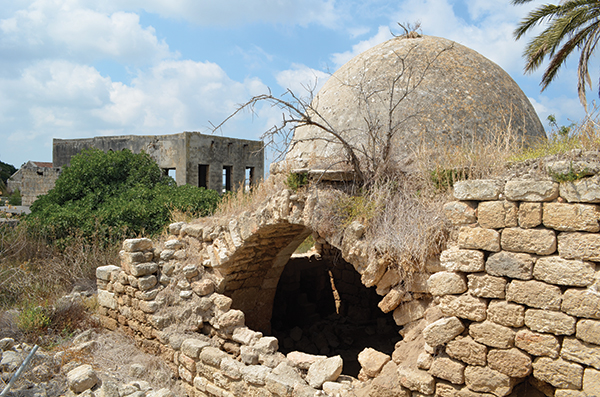
In its place, Israel’s post-war settlements often resembled American suburbs, with new houses scattered, crop-like, in seemingly infinite order. They colonized hills and plains in tidy satellite rows, pantomiming modern middle-class normalcy. Yet they also represented a new vernacular, a national likeness that was by definition non-Palestinian. Throughout its history, the Israeli state has used numerous means not only to conquer the landscape, but to inflect it with the signs and symbols of a new population. Lands have been rebranded through diverse means, from JNF afforestation to the breakneck construction of Jewish housing projects. Now, Palestine’s ethnic cleansing was supported not only through the physical destruction of Palestinian homes and infrastructure but also by supplanting Palestinian structures with new building vocabularies. To be sure, Israel’s growth came as an act of territorial usurpation. But underneath the guns and battle cries, the state’s “quiet war” also formed a war of representation.
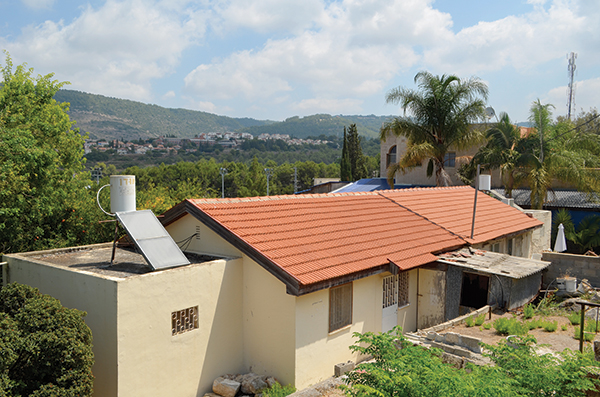
Housing blocs have enacted a longer, subtler, and, in some ways, more pernicious form of violence. Since its earliest history, building has been linked to the growth of the Israeli state. Though it reached its fever pitch after 1948, Israel’s “war of construction” was in fact part of a process that had begun sixty years prior, with Palestine’s earliest Jewish colonies. Known, with a whiff of the American Old West, as “pioneers,” Jewish settlers checkered the countryside with population blocs, building their own archipelago nation. Their compounds were self-contained, connected to one another by a constellation of Jewish roads. Buildings waged a shadow war, a quiet war, appropriating territory in anticipation of the state. Cropping up, fortress-like, in strategic locations, Jewish settlements slowly changed the face of the landscape. Designed as both housing and surveillance units, they were the first instruments of Palestine’s war of construction.
Much like Israel’s earliest compounds, today’s settlements in the West Bank continue to lay siege on Palestinian lands, maintaining a state of persistent conflict. Built atop the peaks of the hilly terrain, these surveillance fortresses visually dominate the valleys. They mime the practices of early Zionist expansion, making today’s settlers heirs to the state’s early builders. Palestinians now live within a grid of semi-autonomous towns and cities, segmented by a network of Israeli roads and settlements. Patrolled by armed guards, with living rooms designed as observation towers, the red-roofed suburban homes of the settlements of Area C are ubiquitous, always looming above. In smaller compounds, tan and white sheds snake around low, rock-strewn hills. Even in the dead of night, rings of bright lights stake their ground. By day, settlements remain omnipresent. To use the historian Gyanendra Pandey’s expression, these building forms have become a way of “nationalizing the nation,” transforming the territories into a mirror image of the Jewish state.iv
» Ariel Sophia Bardi holds a PhD from Yale University, where her research looked at the role of architecture in defining new forms of power in India, Pakistan, and Israel/Palestine. She is the recipient of numerous awards and fellowships, and has carried out separate projects in the West Bank, Turkey, and Nepal. Her writings, documentary photographs, and artworks have appeared in publications throughout the world.
i. Sari Hanafi, “Spaciocide as a Colonial Policy in the Palestinian Territories,” Grotius International, September 30, 2009, Web source.
ii. Quoted by Walid Khalidi, “Text of Plan Gimmel (Plan C), May 1946: Section on Countermeasures,” Journal of Palestine Studies, Vol. 18, No. 1, 1988, p. 20.
iii. Quoted in Joseph Schechtman, Population Transfers in Asia, New York: Hallsby Press, 1949.
iv. Gyanendra Pandey, Remembering Partition: Violence, Nationalism, and History in India, Cambridge: Cambridge University Press, 2001, p. 17.

